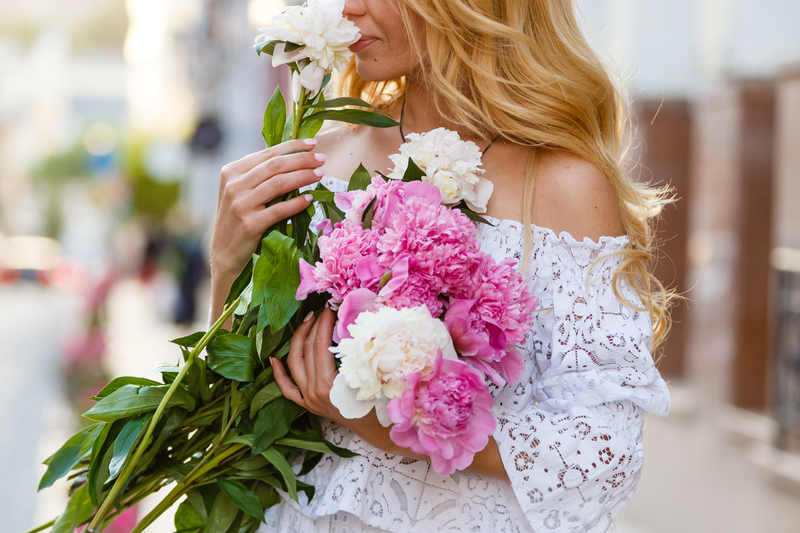Mastering the Art of Cut Flower Care
Posted on 14/06/2025
Mastering the Art of Cut Flower Care: Expert Tips for Longer-Lasting Bouquets
Cut flowers bring color, fragrance, and joy to any space--yet their beauty can be fleeting without the right care. Mastering the art of cut flower care isn't just for florists; anyone can extend the life and vibrancy of their blooms by applying proven techniques and understanding the science behind their longevity.
Why Proper Cut Flower Care Matters
The excitement of receiving (or gifting) a beautiful bouquet is universal. However, many people feel disappointment when their floral arrangements wilt and lose freshness after a few short days. Proper cut flower care not only prolongs the lifespan of flowers but also enhances their appearance, scent, and the emotional value they bring to your home or event.
- Extend the bloom time of your favorite flowers
- Save money by getting the most out of every arrangement
- Enjoy healthier, brighter, and more fragrant displays
- Reduce waste, supporting a more sustainable lifestyle

Understanding the Science Behind Cut Flower Care
To truly master the art of cut flower care, it's essential to understand what causes flowers to wilt. Once cut, flowers lose their natural water source and become susceptible to bacteria growth, dehydration, and blockage in their stems. Oxygen bubbles can also form, preventing efficient water uptake. Knowing these pain points helps us address them directly with the right methods and tools.
Most Common Causes of Premature Flower Wilting
- Bacterial growth in the water and on stems
- Incorrect temperature and humidity levels
- Lack of essential nutrients
- Improper cutting techniques
- Exposure to ethylene gas from fruits or decaying matter
Choosing the Best Flowers for Cut Arrangements
Some flowers naturally last longer than others when used in bouquets. Longevity depends both on the species and how the blooms are handled post-harvest. When selecting flowers for arrangements, consider these durable and beautiful options:
- Alstroemeria (Peruvian Lily)
- Carnations
- Chrysanthemums
- Roses
- Orchids
- Sunflowers
- Gladiolus
- Lisianthus
- Gerbera daisies
Of course, proper cut flower maintenance can make even the most delicate blooms last significantly longer.
Step-by-Step Guide: How to Care for Cut Flowers
1. Preparing Your Vase or Container
Start with a clean vase. Residue or bacteria from previous arrangements can quickly contaminate fresh stems. Wash your vase with hot, soapy water and rinse thoroughly. A splash of bleach or vinegar is an extra step avid florists recommend to guarantee cleanliness.
2. Water Quality and Additives
Fill your vase with lukewarm (not cold or hot) water, as flowers absorb it more efficiently. Add the flower food sachet that often comes with bouquets, or make your own solution:
- 1 quart warm water
- 2 tablespoons lemon or lime juice (for acidity)
- 1 tablespoon sugar (provides energy)
- 1/2 teaspoon household bleach (reduces bacteria)
Stir the solution thoroughly before adding your flowers. Replace the solution and re-clean the container every 2-3 days.
3. Trimming Stems Like a Pro
Always use sharp, clean scissors or a floral knife.
- Cut stems at a 45-degree angle: This maximizes the area for water uptake.
- Trim under running water or submerge stems as you cut
- Remove 1-2 inches from the bottom of each stem for best results
- Snip off any leaves that will sit below the waterline to prevent rot and bacteria growth
4. Arranging Flowers Skillfully
Arrange your cut flowers loosely to allow air flow between the stems. Avoid overcrowding, which promotes mold and blocks water access.
- Start with a "grid" of greenery for supportive structure
- Add larger focal flowers next
- Finish with delicate filler flowers
Rotate the container as you work for balanced results. Creativity and personal taste are celebrated in the art of flower arranging!
Maintaining Cut Flower Freshness: Top Tips
Daily attention can keep your bouquet looking vivid for up to two weeks or longer. Here are essential tips for ultimate flower longevity:
- Replace water every 2 days--never top off stagnant water
- Recut stems every time you change the water
- Remove fading or wilted blooms promptly to keep the bouquet healthy
- Keep flowers away from direct sunlight, heat sources, and drafts
- Avoid placing arrangements near ripening fruit (which emits ethylene gas)
- Mist petals gently for orchids, roses, and hydrangeas
- Keep flowers cool overnight if possible (e.g., in an unheated room)
Common Mistakes to Avoid in Cut Flower Care
Even seasoned flower lovers can make errors that shorten the life of their arrangements. Watch out for these common pitfalls:
- Neglecting to wash the vase between uses
- Forgetting to recut stems with each water change
- Leaving leaves or petals submerged in water
- Using water that's too hot or cold
- Exposing flowers to cigarette smoke, vehicle fumes, or fruit bowls
- Placing flowers on heat-generating surfaces (electronics or appliances)
DIY Flower Food Recipes for Nourishing Cut Flowers
If you run out of commercial flower food, you can make your own flower-preserving solution at home. These household recipes maximize cut flower vitality:
- Mix 2 tablespoons apple cider vinegar + 2 tablespoons sugar per quart of water
- Drop a penny or a splash of bleach to reduce microbial growth
- Dilute lemon-lime soda (not diet) with water for a sugary, acidic boost
Experiment to see which formula works best with your favorite flower varieties.
The Unique Needs of Different Flower Types
Certain flowers benefit from special care routines to unlock their full potential:
- Tulips: Keep stems straight by wrapping in newspaper and placing upright in water for an hour before arranging.
- Roses: Submerge in lukewarm water before trimming and arranging to maximize hydration.
- Hydrangeas: Dip the stem tips in hot water, then in cold, to break airlocks and boost moisture uptake.
- Sunflowers: Remove all leaves below the waterline and use tall, heavy vases for support.
- Daffodils: Keep separate from other flowers for at least 12 hours (they secrete a sap that clogs stems of other flowers).
FAQs About Mastering Cut Flower Care
How often should I change water for my cut flowers?
Change the water at least every two days. More frequent changes may be needed in very warm or humid conditions to prevent bacterial growth.
Why do my flowers droop after a day?
Likely reasons include blocked stems, no fresh cut, dirty vase, or low water quality. Follow the full care routine above to revive them. Some flowers are also more delicate and short-lived than others.
What temperature is best for cut flower storage?
Cooler temperatures (about 65?F/18?C) prolong cut flower life. Avoid extremes of heat or cold, such as radiators, direct sun, or air conditioning vents.
The Role of Florists and Flower Delivery Services
Professional florists often treat cut flowers with preservatives and special handling techniques. When ordering from a reputable flower shop or online flower delivery service, your arrangement may come with a care guide. Always follow their instructions, as they know the unique properties of the flowers selected.
Eco-Friendly Cut Flower Care: Sustainable Practices
As environmental concerns grow, so does the popularity of sustainable floristry. Here's how you can enjoy stunning bouquets while keeping your ecological footprint small:
- Choose locally grown, seasonal flowers with minimal transport
- Reuse and sterilize vases and containers
- Compost faded blooms and leaves instead of sending to landfill
- Avoid floral foam, which is not biodegradable
- Use homemade flower food with natural ingredients

Inspiring Flower Arrangement Ideas for Every Occasion
Once you've mastered basic cut flower care techniques, experiment with creative displays:
- A monochromatic bouquet for a modern statement
- Wildflower mixes for rustic charm
- Tall, structural arrangements for dramatic flair
- Compact mixes of peonies, roses, and ranunculus for romantic settings
Remember, artful arranging and careful maintenance bring out the very best in every bloom.
Conclusion: Celebrate Life's Beauty with Expert Cut Flower Care
Mastering the art of cut flower care allows anyone to enjoy longer-lasting, more vibrant floral arrangements--whether as gifts, home decor, or event centerpieces. With a few simple but powerful techniques--from cutting stems properly and mixing nourishing solutions, to daily maintenance and mindful arrangement--you can revel in blossoms that stay fresh up to two weeks or longer. Beyond mere aesthetics, proper cut flower upkeep is a joyful, sustainable act that honors nature's beauty indoors.
Bring home your favorite flowers or surprise someone special, secure in the knowledge that your newfound skills will keep these natural wonders looking--and feeling--their very best. Happy arranging!
Latest Posts
The Romantic Allure of Red Roses on Valentine's
Make Your Vibrant Blooms Last Longer with These Simple Tips
Tulip Trivia: Seven Surprising Insights You Didn't Know






